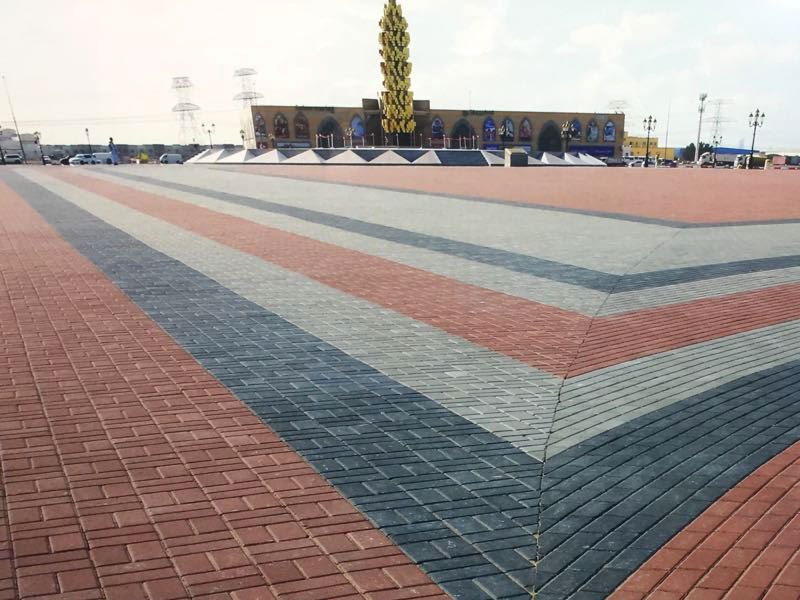- Exterior & Landscape
-
Building & Construction
- Concrete Contractors
- Demolition
- Blocks & Concrete Products
- Structural Engineer
- Road Contractors
- Pre - Engineered Buildings
- Steels & Metals Construction
- Scaffolding
- Soil Test
- Generator
- Heavy Equipments
- Junk Removals
- Waterproofing
- General Contractors
- Pre - Fabricated House
- Portable Containers
- Excavation
- Foundation
- Steel & Metal Fabrication
- Drainage System
- Airport Construction
- Home Maintenance
- Consulting
- Audio Visual System & IT
- Floorings & Wall
- Others
- Furniture
-
Building & Renovation
- Stone & Marble
- Wooden Products
- Gypsum Products
- Building Material Suppliers
- Paint
- Lift & Escalators
- Kitchen & Bathroom
- Fit - Out Contractors
- Specialist Contractors
- Glass
- Kitchen & Bathroom Accessories
- Wall & Wall System Product
- Electrical Contractor
- Mechanical
- Gypsum Work
- Window Suppliers
- Turn Key Contractors
- Door Suppliers
- Ironmongery
- Fire Fighting Contractors
- Building Maintenance
- Permits & Authority Approvals
- Carpentry and Joinery
- Roofing System
- Aluminum
- Lighting
- Railings
- Metal Supplier & Contractor
- Manpower
- Home Solar System
- Design & Decoration
- Events & Exhibitions
- Marine
- About
A Comprehensive Review of Wordle NYT (July 13, 2025)
Wordle, the popular daily word puzzle game, has continued to captivate players worldwide since its acquisition by The New York Times (NYT) in early 2022. As of July 13, 2025, the game maintains its status as a cultural phenomenon, blending simplicity with intellectual challenge. This review explores various facets of Wordle under the NYT’s stewardship, examining gameplay, community impact, educational value, and ongoing evolution.
📕📕📕 If you want the normal Wordle version go back to: Nyt Wordle - Today Game - Wordle NYT Online
Gameplay and User Experience
Wordle’s core mechanics remain elegantly simple: players have six attempts to guess a five-letter word. Feedback is provided through color-coded tiles that indicate correct letters in the right position (green), correct letters in the wrong position (yellow), and incorrect letters (gray). This intuitive design ensures accessibility for casual players while still offering depth for word enthusiasts.
📕📕📕 If you want the normal Wordle version go back to: Wordle
The New York Times has enhanced the game’s interface with smooth animations, responsive design across devices, and subtle accessibility improvements, such as colorblind-friendly options and screen reader compatibility. These updates reflect NYT’s commitment to inclusivity without compromising the original game's minimalist charm.
Community and Social Impact
One of Wordle’s most distinctive features is its social connectivity. Players worldwide share their daily results on social media, often sparking friendly competition and fostering a sense of global camaraderie. The NYT has nurtured this community by integrating leaderboards, streak trackers, and optional daily challenges, which encourage ongoing engagement.
📕📕📕 If you want the normal Wordle version go back to: Wordle game
Critics sometimes argue that the game’s daily limit restricts playtime unnecessarily, but supporters claim this feature preserves the puzzle’s uniqueness and prevents burnout. The shared daily experience creates a cultural rhythm, linking players across different backgrounds in a collective mental exercise.
Educational Significance
Wordle serves as an excellent tool for vocabulary building and critical thinking. Educators have incorporated it into classroom settings to enhance language skills, spelling, and deductive reasoning. Its format promotes pattern recognition and strategic guessing, which are valuable cognitive abilities.
📕📕📕 If you want the normal Wordle version go back to: Wordle online
However, some linguists point out that Wordle’s reliance on common English words may limit exposure to diverse vocabulary or disadvantage non-native speakers. The NYT has responded by periodically introducing themed weeks and variant puzzles that include broader word sets, thus increasing educational value.
Evolution and Future Prospects
Since acquisition, the NYT has expanded Wordle’s brand with spin-offs like Quordle and Octordle, which increase complexity by requiring simultaneous guesses of multiple words. These variants cater to more advanced players seeking greater challenges.
📕📕📕 If you want the normal Wordle version go back to: Wordle Unlimited
Looking forward, the NYT is exploring AI-driven personalized puzzles and multiplayer modes, which could transform Wordle from a solitary pastime into a dynamic social experience. Balancing innovation with the game’s defining simplicity will be crucial to maintaining its broad appeal.
Counterarguments and Critiques
Despite its popularity, Wordle faces criticism regarding potential over-saturation and the risk of becoming a fleeting trend. Some argue that the game’s repetitive nature may lead to boredom over time. Additionally, the exclusive daily puzzle model may frustrate those who seek more frequent engagement.
Moreover, concerns about data privacy and the NYT’s monetization strategies have surfaced, especially as the game integrates more features that require user accounts. Transparency and user control will be vital in addressing these issues.
How to Play Wordle by The New York Times: A Comprehensive Guide
Wordle, the popular word puzzle game originally created by Josh Wardle and later acquired by The New York Times, has captivated millions worldwide with its simple yet addictive gameplay. If you’re looking to play Wordle through The New York Times platform, here’s everything you need to know about how to get started, the gameplay mechanics, and some tips to improve your skills.
What is Wordle?
Wordle is a daily word guessing game where players have six attempts to guess a secret five-letter word. Each guess must be a valid five-letter word, and after each guess, the game provides feedback through color-coded tiles:
Green: The letter is in the correct spot.
Yellow: The letter is in the word but in the wrong spot.
Gray: The letter is not in the word.
This feedback helps players narrow down the possible words and eventually guess the secret word of the day.
How to Play Wordle on The New York Times Website
Visit the Official Website: Go directly to The New York Times’ Wordle page by typing https://www.nytimes.com/games/wordle/index.html in your browser.
Start the Game: The game loads instantly with a fresh puzzle every day. Wordle is free to play, and no subscription is required.
Enter Your Guesses: Type a valid five-letter word and press enter. The game will color-code the letters according to their accuracy.
Analyze the Feedback: Use the colors to strategize your next guess, eliminating impossible letters and confirming correct ones.
Repeat Until Solved or Attempts Exhausted: You have up to six tries to guess the word. If you guess correctly, you can share your results on social media via a unique emoji grid that maintains the mystery of the word.
Why Play Wordle on The New York Times?
The acquisition by The New York Times has brought additional polish and reliability to the game. It is officially maintained with daily updates and ensures fair play. Additionally, playing on the NYT platform guarantees a smooth user experience without ads or distractions.
Strategies and Tips to Improve Your Wordle Game
Start with Common Vowels and Consonants: Words like "adieu" or "stare" cover common vowels and consonants, helping reveal or exclude many letters early.
Use Process of Elimination: As you receive feedback, systematically remove letters that do not appear in the word and focus on letter placement.
Consider Letter Frequency and Position: Some letters more commonly appear at the start or end of words.
Avoid Repeats Too Early: Until you confirm a letter is repeated, try to test different letters first.
Practice Regularly: Since Wordle offers a new puzzle daily, consistent play helps sharpen your vocabulary and logic.
Perspectives on Wordle’s Popularity
The Appeal of Simplicity
Wordle’s straightforward rules and daily limit foster a healthy balance of challenge and accessibility. It appeals to both casual players and word enthusiasts.
Social Sharing Aspect
One unique feature is the ability to share results without spoilers, encouraging community engagement and friendly competition.
Critiques and Limitations
Some players find the once-daily puzzle restrictive, wishing for more puzzles or variations. Others feel the game can become repetitive over time due to a limited word list.
Conclusion
Wordle remains a shining example of how a simple concept can spark widespread enthusiasm and foster community through shared intellectual challenge. The New York Times’ stewardship has preserved its core appeal while introducing thoughtful enhancements that expand its reach and educational impact.
As Wordle continues to evolve, it stands as a testament to the enduring power of word games to entertain, educate, and connect people. Whether you are a casual player or a dedicated wordsmith, Wordle offers a daily opportunity to engage your mind and join a global community united by a love of language.






